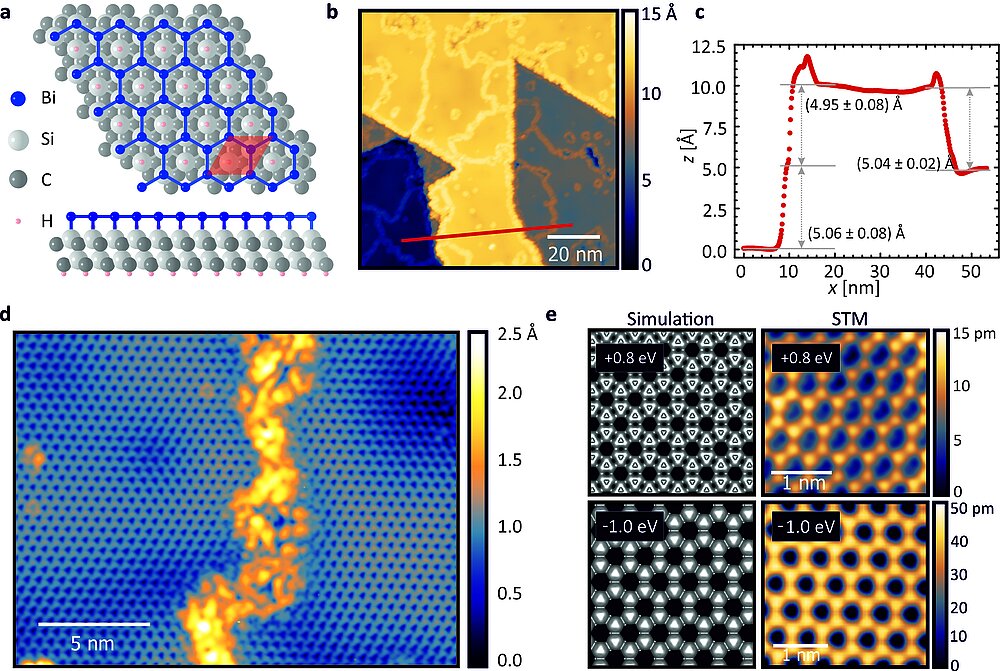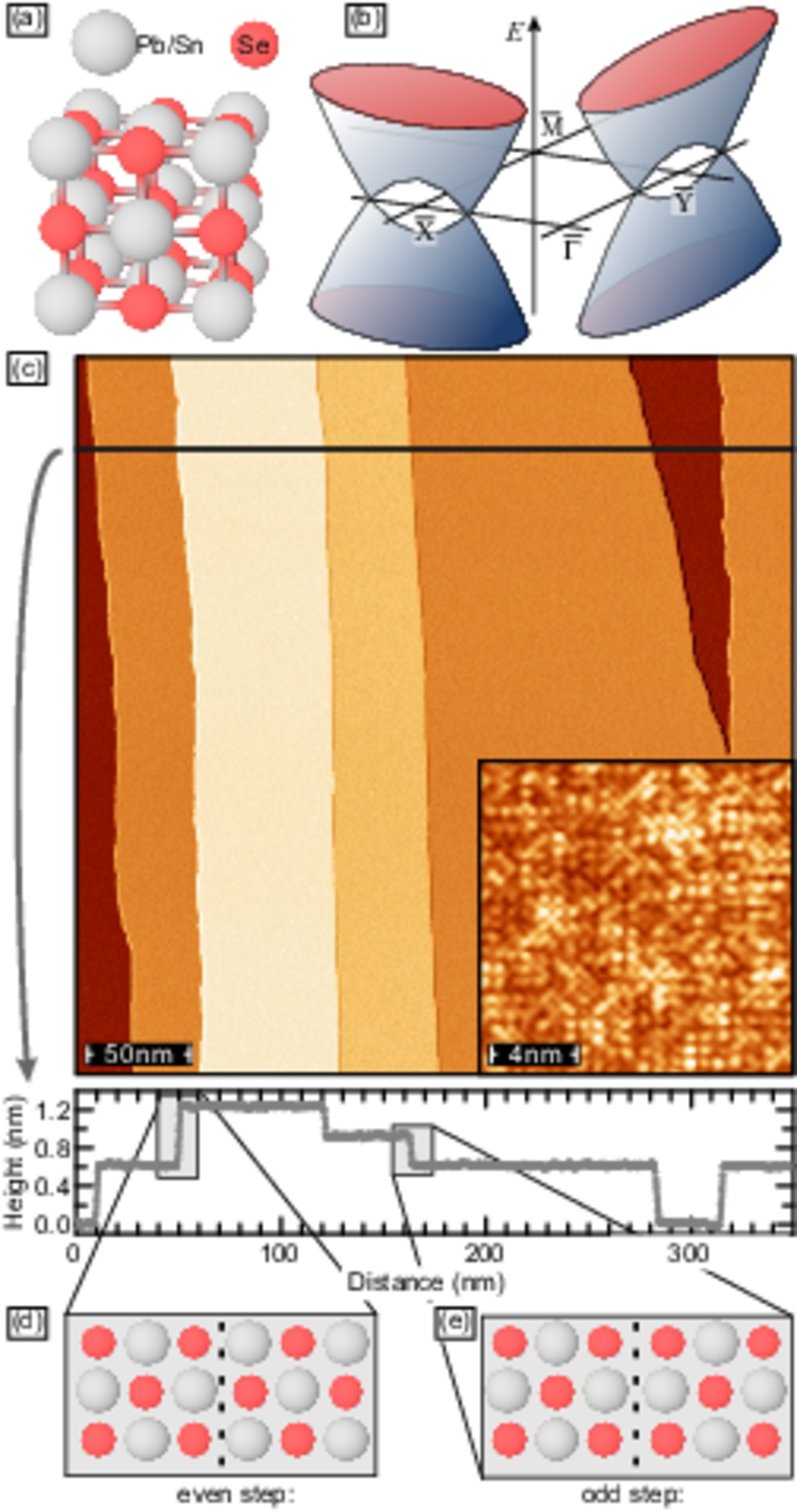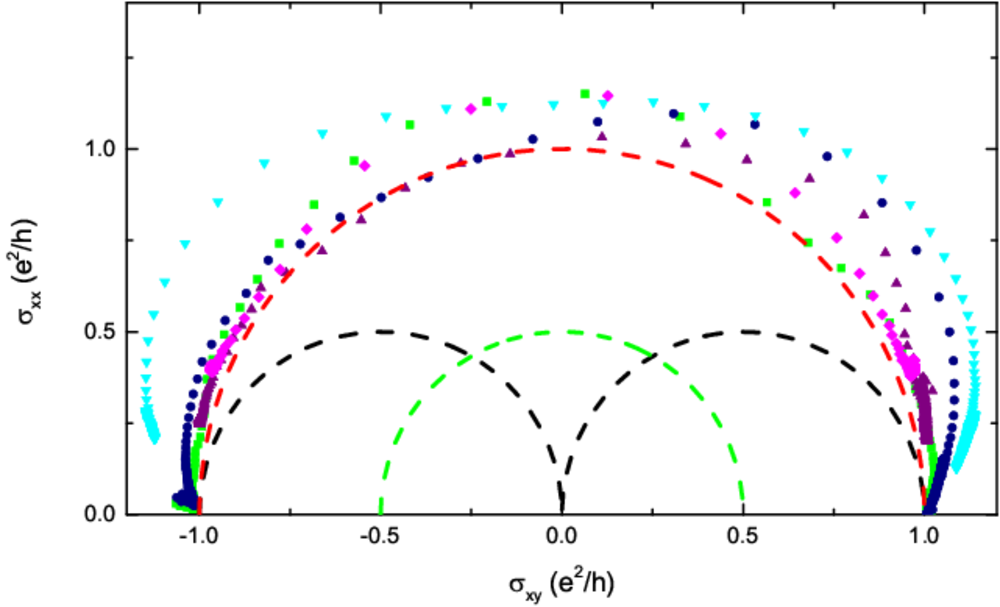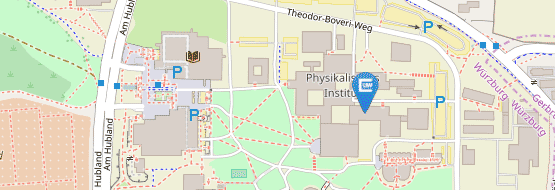Research Topics
Nachfolgend 3 ausgewählte Forschungsthemen.
Bismuthene on a SiC substrate: A candidate for a high-temperature quantum spin Hall material

Quantum spin Hall materials hold the promise of revolutionary devices with dissipationless spin currents but have required cryogenic temperatures owing to small energy gaps. Here we show theoretically that a room-temperature regime with a large energy gap may be achievable within a paradigm that exploits the atomic spin-orbit coupling.
The concept is based on a substrate-supported monolayer of a high–atomic number element and is experimentally realized as a bismuth honeycomb lattice on top of the insulating silicon carbide substrate SiC(0001).
Using scanning tunneling spectroscopy, we detect a gap of ~0.8 electron volt and conductive edge states consistent with theory. Our combined theoretical and experimental results demonstrate a concept for a quantum spin Hall wide-gap scenario, where the chemical potential resides in the global system gap, ensuring robust edge conductance.
Robust spin-polarized midgap states at step edges of topological crystalline insulators

Topological crystalline insulators are materials in which the crystalline symmetry leads to topologically protected surface states with a chiral spin texture, rendering them potential candidates for spintronics applications.
Using scanning tunneling spectroscopy, we uncover the existence of one-dimensional (1D) midgap states at odd-atomic surface step edges of the three-dimensional topological crystalline insulator (Pb,Sn)Se. A minimal toy model and realistic tight-binding calculations identify them as spin-polarized flat bands connecting two Dirac points.
This nontrivial origin provides the 1D midgap states with inherent stability and protects them from backscattering. We experimentally show that this stability results in a striking robustness to defects, strong magnetic fields, and elevated temperature.
Scaling of the Quantum Anomalous Hall Effect as an Indicator of Axion Electrodynamics

We report on the scaling behavior of V-doped (Bi,Sb)2Te3 samples in the quantum anomalous Hall regime for samples of various thickness. While previous quantum anomalous Hall measurements showed the same scaling as expected from a two-dimensional integer quantum Hall state, we observe a dimensional crossover to three spatial dimensions as a function of layer thickness.
In the limit of a sufficiently thick layer, we find scaling behavior matching the flow diagram of two parallel conducting topological surface states of a three-dimensional topological insulator each featuring a fractional shift of 12e2/h in the flow diagram Hall conductivity, while we recover the expected integer quantum Hall behavior for thinner layers.
This constitutes the observation of a distinct type of quantum anomalous Hall effect, resulting from 12e2/h Hall conductance quantization of three-dimensional topological insulator surface states, in an experiment which does not require decomposition of the signal to separate the contribution of two surfaces. This provides a possible experimental link between quantum Hall physics and axion electrodynamics.


